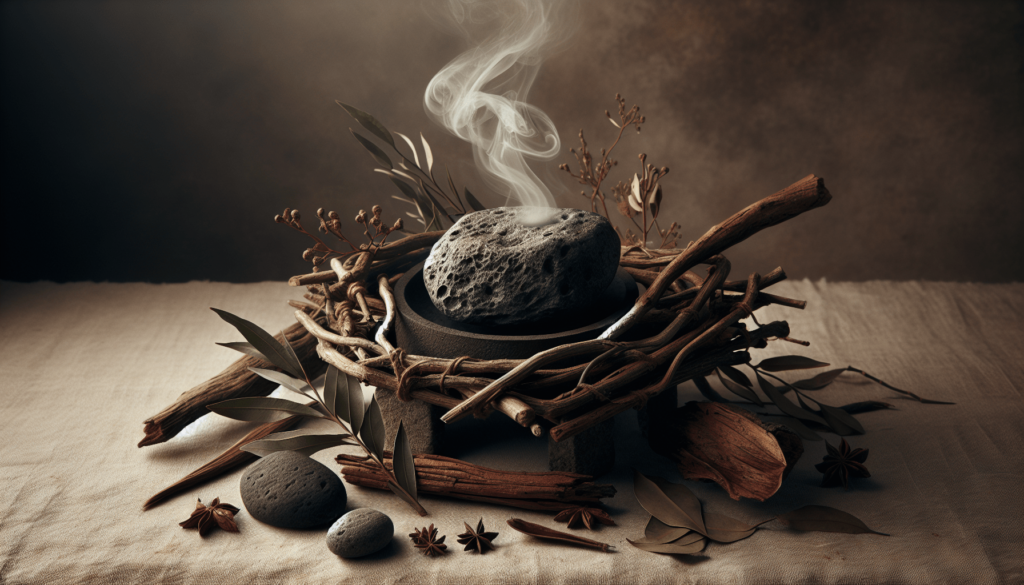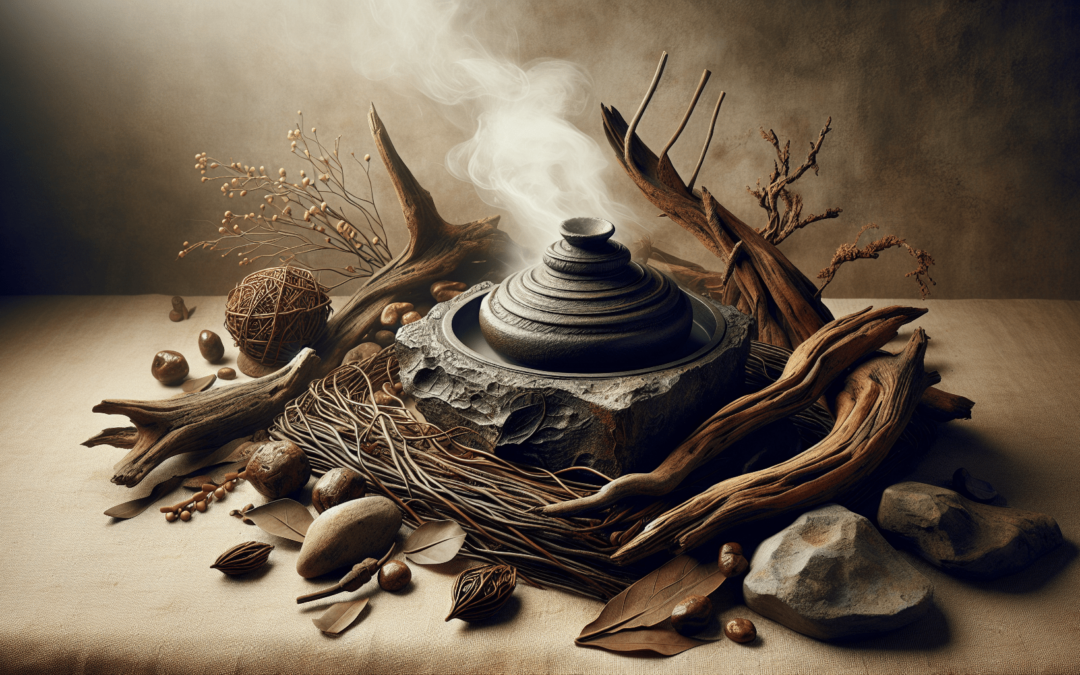In “Cooking With Hot Stones: Primitive Methods,” you embark on a fascinating journey back to ancient culinary techniques. This article introduces you to the rich history and practical methods of using hot stones for cooking, a tradition that has been passed down through generations. You’ll discover how our ancestors harnessed the natural heat of stones to prepare delectable meals, and how you can replicate these methods in your backyard or during camping trips. Get ready to connect with nature and your food in a whole new way, while gaining a deeper appreciation for the simplicity and effectiveness of primitive cooking techniques. Have you ever wondered how our primitive ancestors managed to cook their food? Long before the advent of modern kitchen appliances, they developed innovative ways to prepare their meals using the natural resources available to them. One fascinating method is cooking with hot stones. This ancient technique showcases the ingenuity and resourcefulness of early humans, bringing us back to a time when nature was both the chef and the kitchen.

What is Cooking With Hot Stones?
Cooking with hot stones involves heating rocks until they are red-hot and then using them to cook food. This method can be as straightforward or as elaborate as you wish, but it almost always provides a unique culinary experience that connects you to ancient traditions. The basic concept remains the same regardless of the specific techniques and variations: stones are heated in a fire and then used to cook food directly or indirectly through different methods.
Historical Background
Hot stone cooking has been practiced by various cultures around the world for thousands of years. From the Pacific Islanders who used it in their earth ovens, known as “umu,” to Native American tribes who practiced stone boiling, the technique spans continents and generations.
Table: Cultural Practices of Hot Stone Cooking
| Region | Method | Description |
|---|---|---|
| Pacific Islands | Umu (Earth Oven) | Stones heated in a fire are placed in an underground pit. Food wrapped in leaves is layered between hot stones and covered with earth to cook slowly. |
| North America | Stone Boiling | Heated stones are dropped into a water-filled container to bring it to a boil and cook the food placed in it. |
| Europe | Stone Grilling | Flat stones heated and used to cook meat or fish directly. |
| South America | Pachamanca | Stones heated in a pit, layered with meat, potatoes, and other foods, then covered to slow-cook. |
Types of Stones Suitable for Cooking
Not all stones are created equal when it comes to cooking. It’s essential to select the right kind of stones to avoid accidents and ensure an even cooking experience.
Recommended Stones
- Granite: Durable and capable of holding heat for an extended period.
- Basalt: A volcanic rock great for retaining heat.
- Sandstone: Suitable for lower-temperature cooking.
Stones to Avoid
- Limestone: Can explode when heated due to trapped moisture.
- River Rocks: Often contain moisture and can splinter or shatter.
Preparing for Hot Stone Cooking
With the right stones in hand, preparing to cook with hot stones involves a few essential steps.
Gathering Materials
- Stones: Preferably preselected types.
- Firewood: To create a fire for heating the stones.
- Tongs or Fireproof Gloves: For handling hot stones.
- Cooking Utensils: Depending on what you plan to cook (e.g., tongs, spatula, pots).
Building the Fire
Start by creating a sizeable fire pit. The fire should be large enough to heat the stones evenly but manageable enough to control. Allow the fire to burn down to produce hot coals and glowing stones. This usually takes around 1-2 hours. Ancient cultures often used specific fire-building techniques such as teepee or log-cabin structures to achieve optimal heat.
Methods of Hot Stone Cooking
Different methods offer varied culinary experiences and cooking results. We’ll go over some of the most common ones.
Stone Boiling
Stone boiling involves heating stones in a fire and then transferring them to a water-filled container to create boiling water. This method is excellent for soups, stews, and boiling root vegetables.
Step-by-Step Guide:
- Heat the Stones: Place your selected stones in a fire and heat them until they’re glowing red.
- Prepare the Container: Fill a wooden, bark, or animal skin container with water and the food you want to cook.
- Transfer the Stones: Use tongs to transfer the hot stones into the water-filled container until it starts to boil.
- Maintain the Boil: Add or replace stones as needed to keep the water boiling until your food is cooked.
Earth Ovens (Umu, Imu, Pachamanca)
Earth ovens are large cooking pits covered with earth to trap heat and cook food slowly.
Step-by-Step Guide:
- Dig a Pit: Create a hole in the ground large enough to fit your food and stones.
- Prepare the Fire: Place a significant amount of firewood in the pit and lay your stones on top. Burn the wood to heat the stones thoroughly.
- Add Food Layers: Once the wood has burned down, add food to the pit. Often, food is wrapped in leaves and layered with the hot stones.
- Cover the Pit: Cover the pit with leaves, cloth, and then a layer of earth to trap the heat.
- Cook Slowly: Allow the food to cook for several hours. The exact duration will depend on what you are cooking.
Direct Grilling
This is the simplest method, where flat stones are used as a cooking surface, similar to a griddle or frying pan.
Step-by-Step Guide:
- Select Flat Stones: Choose flat, clean stones that can serve as a makeshift griddle.
- Heat Stones: Place these stones in a fire until they are sufficiently hot.
- Cook on Stone Surface: Place meat, fish, or vegetables directly on the hot stone surface. Use a spatula or similar utensil to flip and move the food as needed.
Stone Baking
For baking, stones can be heated and then placed inside a clay or earthen oven.
Step-by-Step Guide:
- Heat the Stones: Like before, heat your stones in a wood fire.
- Prepare the Oven: If you have an earthen oven, place the hot stones inside it to increase the internal temperature.
- Bake Goods: Add bread or other baked goods into the oven, using the residual heat from the stones to complete the cooking process.

Benefits of Cooking with Hot Stones
Cooking with hot stones offers several unique benefits that are absent in modern cooking methods.
Nutritional Benefits
Cooking with hot stones tends to preserve more nutrients in your food. Unlike high-temperature modern cooking appliances, this primitive method allows for a slower, more natural cooking process, which retains the food’s vitamins and minerals.
Flavor Enhancement
The natural, earthy flavors imparted by cooking with hot stones can be nothing short of sublime. Whether it’s the smokiness from the fire or the nuanced taste from ancient grains, the final product often has an unparalleled depth of flavor.
Environmental Impact
Cooking with hot stones is more environmentally friendly than using gas or electric appliances. It relies on natural resources, and the process can be zero-waste if done thoughtfully.
Tips for Safety
Safety should be your first priority when cooking with hot stones. Here’s how to ensure a safe cooking experience.
Avoiding Explosions
Always ensure that the stones you use are thoroughly dry. Any moisture inside the stone can cause it to explode when heated.
Using Proper Tools
Use tongs or fireproof gloves to handle hot stones. Never use your bare hands.
Site Preparation
Make sure your cooking site is stable and free from flammable materials. Always have a bucket of water or a fire extinguisher nearby in case of emergency.
Modern Takes on Hot Stone Cooking
While rooted in primitive methods, hot stone cooking has found its way into modern kitchens and restaurants.
Stone Grilling in Restaurants
Hot stone grilling has become a trendy dining option, where chefs bring sizzling stones to the table, allowing diners to cook their own food to their liking.
DIY Home Experiences
You can also incorporate hot stone cooking into your home kitchen. Specialized stone cookware is available, designed to be heated in ovens or over stoves.
Conclusion
Embracing the ancient method of cooking with hot stones offers a deeper connection to our ancestors, a celebration of natural flavors, and a healthier way to prepare food. Whether you’re aiming for a weekend backyard experiment, an outdoor camping meal, or a gourmet restaurant experience, hot stone cooking adds a unique twist that’s worth trying. With proper preparation and respect for safety measures, you’ll find this primitive method not only fascinating but incredibly rewarding as well. So why not gather some stones, spark a fire, and cook a meal the way our ancestors did? It’s not just about feeding yourself; it’s about experiencing a slice of history on your plate.
By exploring the traditions, methods, and even modern takes on this cooking technique, you’ll appreciate the timeless appeal of cooking with hot stones. Dive in and let the heat guide you to culinary satisfaction.

